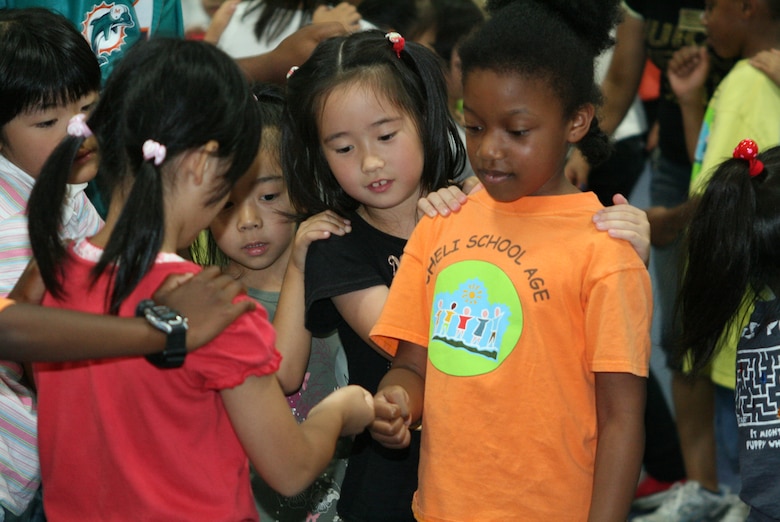Building Relationships with Icebreakers and Kinesthetic Learning
In my opinion, back to school time is the best time of the year! Teachers are focused and committed to building those positive first impressions that will then lead to strong student/teacher relationships throughout the year. Games are being played, the students are happy and excited, and relationships are being created between both the teacher and the student, and the student and their peers.
This year, particularly, is creating challenging opportunities to build relationships with both face-to-face and remote learners. There are many fun activities that you can do with your students to get them moving online too! Virtual scavenger hunts, remote exercises, and many more kinesthetic activities will have your students moving online in no time!
Teachers, during this time of the school year, are also digging into their bags of icebreakers. Usually, and typically, these icebreaker activities involve some kind of movement, collaboration, and fun! Here's a great blog post from our buddy, Matt Miller (Ditch That Textbook) that list, with the help of his PLN, 75 back to school ideas, activities, and icebreakers! One of my FAVORITE icebreaker activities that I've done numerous times at conferences and in my classroom, is, what I like to call:
ROCK, PAPER, SCISSORS, BIGGEST FAN!!
It works like this:
- Everyone in the room gets back-to-back with another student.
- (You, as the leader, raise your hand and say, "I'm the lost and found, anyone who can't find a partner, come to me, and I'll find you a partner." Thus, based on even or odd numbers, you may have to join in the fun!
- Now, with everyone partnered up, have the partners turn around, face each other and complete the following:
- Introduce yourself and say one (or two) things you are excited about for this upcoming year of school. (Make up similar questions if doing this during a different time of the year, or with a different group of folks.)
- With intro's completed, we can now hop into our game.
- Explain the rules and procedures of a typical Rock, Paper, Scissors game.
- My rules: both partners have to say, "one, two, shoot", and on the word, "shoot" they show (using their hand) either a rock, paper, or scissors.
- With the typical rules and procedures established, you now explain the "Biggest Fan!" aspect to this version of Rock, Paper, Scissors.
- Here's how "Biggest Fan" works:
- With everyone partnered up, this is "Round 1". The partner that wins (2 out of 3 tries) needs to raise their hand. Once all the partner groups are done with this round, one individual from each partner group should have his/her hand raised.
- The individual without their hand raised (B) is now the biggest fan of the individual with their hand raised (A). Individual (B) needs to cheer for, jump around for, yell for, and support 110% Individual (A). Again, Individual (B) is the BIGGEST FAN!
- From each partner group, every Individual (A) with their hand up, needs to go find another (A) with their hand up... Remember, bring your biggest fan with you!
- Now begins "Round 2" between 2 individuals with each having a biggest fan. The individual that wins this round (2 out of 3 tries), now raises their hand. They are the new (A). This individual with their hand raised now has 3 BIGGEST FANS! (Bx3) . These 3 individuals now follow (A) as he/she finds a person with their hand raised.
- Now begins "Round 3", then 4, 5, 6, 7, etc... until you have two huge groups facing each other, each group will be cheering for one individual.
- The game ends when one person wins the championship round... this person now has all participants in the icebreaker cheering for him/her.

Picture via Misawa Air Base (https://goo.gl/iwL3yp)
Movement/kinesthetic learning is a vital part of icebreaker activities, building relationships, and most of all, excellent learning environments. Movement will help make connections with your syntax, learning, procedures, instruction, content retainment, and so much more.
I love this paragraph by, Marwa Abdelbary, from an article written for Education Week Teacher:
"...But studies show that children who are more active exhibit better focus, faster cognitive processing, and more successful memory retention than kids who spend the day sitting still. Keeping the body active promotes mental clarity by increasing blood flow to the brain, making activity vital to both learning and physical and neurological health."
So remember, whether it's busting out some YouTube videos, dancing to some GoNoodle, rocking out to some amazing Flocabulary, or just calming down to some yoga... All our students want is to be engaged and have an exciting school year.
Good luck! Let me know if you have any questions. Also, please share any great ideas/icebreakers you use in your classrooms. Tweet & Follow me: @TommySpall

Comments
Post a Comment